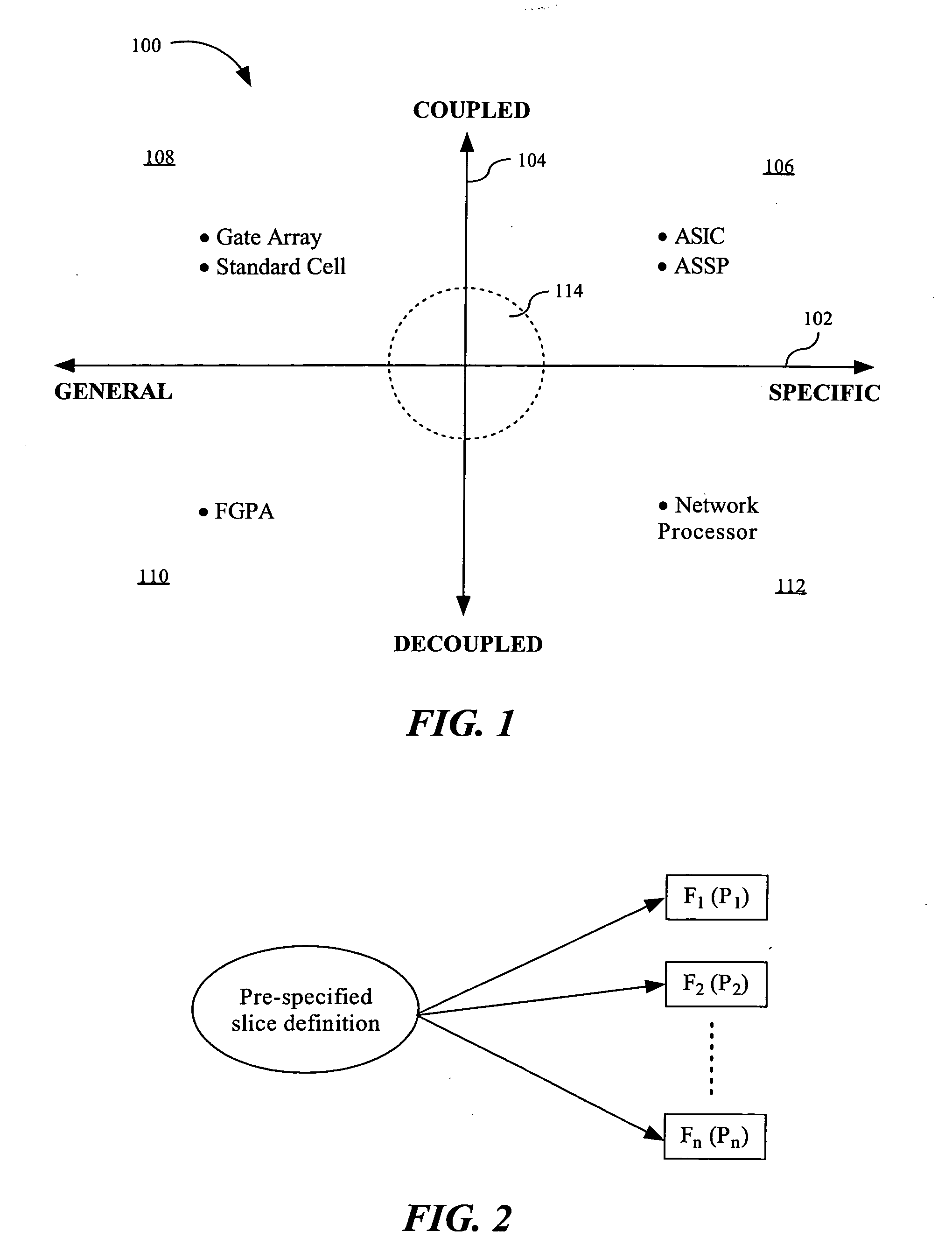Method and apparatus for mapping platform-based design to multiple foundry processes
a technology of platform-based design and foundry process, applied in the field of integrated circuits, can solve the problems of intractable computational problems, mosis does not produce the degree of performance optimality or packing density optimality required in a commercial design, and the goal tended to be very difficult in standard cell architectur
- Summary
- Abstract
- Description
- Claims
- Application Information
AI Technical Summary
Problems solved by technology
Method used
Image
Examples
Embodiment Construction
[0018] Reference will now be made in detail to the presently preferred embodiments of the invention, examples of which are illustrated in the accompanying drawings.
[0019]FIG. 1 is a schematic diagram illustrating a two-dimensional space 100 in which a semiconductor device may be positioned. The space 100 may include a horizontal axis 102, a vertical axis 104, and four quadrants 106, 108, 110 and 112. Using the horizontal axis 102, a distinction may be made between a semiconductor device which is general in its application and another semiconductor device which is specific in its application. Using the vertical axis 104, a distinction may be made between a semiconductor device whose final functionality is coupled to a manufacturing process and another semiconductor device whose final functionality is decoupled to (i.e., independent of) a manufacturing process, using some form of programmability.
[0020] An FPGA (field programmable gate array) is an example of a decoupled device that ...
PUM
 Login to View More
Login to View More Abstract
Description
Claims
Application Information
 Login to View More
Login to View More - R&D
- Intellectual Property
- Life Sciences
- Materials
- Tech Scout
- Unparalleled Data Quality
- Higher Quality Content
- 60% Fewer Hallucinations
Browse by: Latest US Patents, China's latest patents, Technical Efficacy Thesaurus, Application Domain, Technology Topic, Popular Technical Reports.
© 2025 PatSnap. All rights reserved.Legal|Privacy policy|Modern Slavery Act Transparency Statement|Sitemap|About US| Contact US: help@patsnap.com



